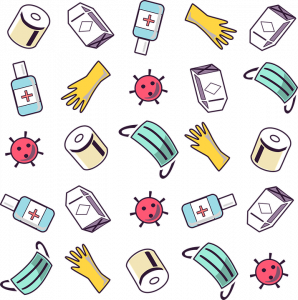After a year in which COVID-19 has left more than 3.2 million deaths and 150 million infected globally , we have learned that testing and contact tracing are the backbone to ensure an effective response to a pandemic. However, few countries achieved effective control, especially in Latin America and the Caribbean. The recent publication of the Inter-American Development Bank (IDB) asks how testing and contact tracing can stop the pandemic in the region? Here we share some of the key lessons regarding testing and contact tracing from the first year of COVID-19.
Lesson # 1: Coordination of governments for efficient and sustainable policy implementation
 Any solution that you want to implement requires joint work between governments at the national and sub-national levels. On the one hand, it is essential that a country decentralize the performance of PCR, serological tests and the implementation of group tests in order to reach remote areas, including isolated indigenous populations. For this, this coordination is essential to identify, for example, laboratories and regional institutions that can implement these strategies. In turn, due to the inability to test the entire population, it also allows prioritization rules to be created on who receives the tests (and vaccines) according to the characteristics of each state government.
Any solution that you want to implement requires joint work between governments at the national and sub-national levels. On the one hand, it is essential that a country decentralize the performance of PCR, serological tests and the implementation of group tests in order to reach remote areas, including isolated indigenous populations. For this, this coordination is essential to identify, for example, laboratories and regional institutions that can implement these strategies. In turn, due to the inability to test the entire population, it also allows prioritization rules to be created on who receives the tests (and vaccines) according to the characteristics of each state government.
On the other hand, for the application of contact tracing, local governments can support the implementation of regulatory and legislative mechanisms that protect the personal information of the population. Likewise, operational committees can be implemented to articulate the actions between the national and state governments, which allows starting a conversation about the best practices that each sub-national government has implemented, and which in turn allows the sharing of resources between the jurisdictions.
Lesson # 2: Cost-effective technologies that reinforce contact tracing and early epidemiological surveillance
 Efforts to identify and track patient zero and all those infected have resulted in the development of technological solutions (chatbot, contact tracking and notification application, among others). For those with symptoms associated with the virus, patient information is provided to the nearest health center to follow up and trace their contacts. This application uses probability models and risk assessments of populations to track and identify the steps of infected people up to 14 days before becoming infected.
Efforts to identify and track patient zero and all those infected have resulted in the development of technological solutions (chatbot, contact tracking and notification application, among others). For those with symptoms associated with the virus, patient information is provided to the nearest health center to follow up and trace their contacts. This application uses probability models and risk assessments of populations to track and identify the steps of infected people up to 14 days before becoming infected.
However, because the development of these cost-effective technologies sometimes make use of smartphones, they must go hand in hand with the development of policies that focus on transparency and the responsible use of data. For this it is recommended:
- Establish security protocols for the use of information;
- Generate access to data in real time to the scientific and health community (researchers, health professionals and epidemiologists);
- Create easy to access, process and understand metrics that identify places and networks of people with high levels of infection; and
- Create information panels so that the community has clarity on the use of data and its usefulness in the implementation of policies
Lesson # 3: Group Testing to Cope with Resource Scarcity
Given the scarcity of resources to implement a comprehensive testing program, group tests prove to be a cost-effective option that allows savings of up to 60% of the necessary supplies , and a reduction of up to 30% of health personnel. This strategy consists of creating people grouping schemes to determine whether they have been infected or not. If the test is negative for any member of the group, all members are classified as negative. Otherwise, all its members are tested. In Wuhan, China, a group testing campaign tested more than 6 million people in 10 days, identifying asymptomatic cases and preventing an increase in the number of cases.
For its implementation, governments must guarantee low virus prevalence rates; the lower the prevalence, the greater the efficiency of group tests. Some experts indicate that they should be less than 10% of the target population . Likewise, the association with academic institutions, researchers and laboratories of the private sector is recommended. For example, scientists from the Austral University of Chile (UACh) developed a model to carry out massive tests and researchers from the Complex Systems Engineering Institute (ISCI) adapted it to be applied at the national level.
Although vaccines have already reached the countries of Latin America and the Caribbean, testing and contact tracing remain relevant strategies to continue mitigating the impact of COVID-19 or, in other words, to continue saving lives while strategies vaccination begin to develop immunity in more people. If you want to know other lessons learned and how countries can improve their testing and tracking strategies to combat COVID-19 and future pandemics, we invite you to visit the interactive site available Living with Coronavirus .…
Continue reading